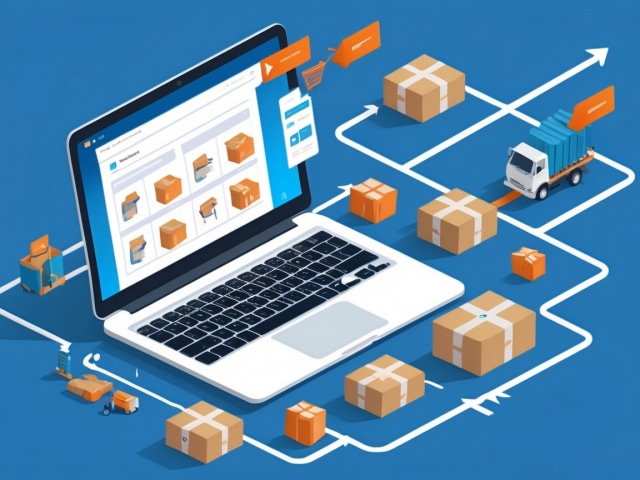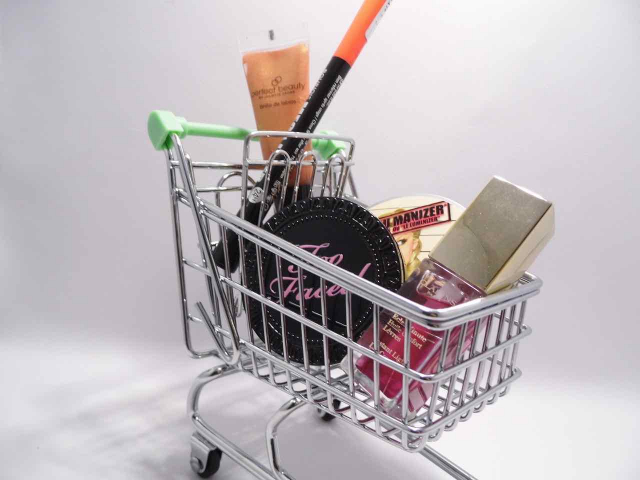Dropshipping is a revolutionary online selling model. This system allows you to sell products without physically storing them. Specifically, your supplier ships orders directly to your customers. This method fundamentally transforms e-commerce store creation.
For French entrepreneurs, dropshipping represents an accessible opportunity. Thus, you can start your business with minimal investment. Moreover, this model eliminates traditional commerce constraints. Consequently, you focus solely on sales and marketing.
Complete definition of dropshipping
Dropshipping disrupts the traditional supply chain. In conventional commerce, you must purchase inventory. Then, you store these products in a warehouse. Finally, you ship each order individually.

When a customer places an order, your supplier automatically receives the details. They then prepare the package with your information. Consequently, your customer receives their order directly from the manufacturer. However, they don’t necessarily know this.
This method remains perfectly legal in France. Nevertheless, new regulations apply since 2024. Notably, Article 112 of the Finance Law modifies VAT obligations. Thus, dropshippers must now collect VAT on all imports.
How dropshipping works in practice
Detailed order process
The dropshipping sales cycle follows several precise steps. First, your customer discovers a product on your Prestashop store. They then add the item to their cart. Next, they complete the payment process.
Immediately after, you receive the order notification. Your system automatically transmits this information to the supplier. They then verify product availability. Subsequently, they prepare shipment according to your specifications.
The supplier typically uses neutral packaging. Sometimes, they can customize the package with your brand. However, this depends on your commercial agreement. Finally, your customer receives their order without knowing the real origin.
Actors and their responsibilities
In this commercial triangulation, each party has specific roles. You, as the dropshipper, manage the customer interface. Specifically, you create the attractive website. Additionally, you develop marketing strategies. Also, you ensure complete customer service.
The supplier, meanwhile, handles the logistics part. They store products in their warehouses. Then, they process each order individually. Finally, they ship directly to indicated addresses. Nevertheless, they remain invisible to your customers.
Your customer makes purchases normally. They perceive no difference from traditional commerce. Consequently, they expect the same service level. However, you remain responsible for the entire customer experience.
Essential technical tools for dropshipping
Several platforms facilitate dropshipping management. BigBuy offers direct integration with Prestashop. This solution automates catalog synchronization. Moreover, it automatically manages stock levels.
Spocket focuses on European and American suppliers. Thus, you benefit from reduced delivery times. Generally, orders arrive in 2-7 days. Consequently, your customers remain satisfied.
DSers replaces the former Oberlo for AliExpress. This platform remains popular despite longer delays. However, it offers an immense catalog. Nevertheless, deliveries take 15-45 days from China.
Major advantages of dropshipping
Minimal initial investment
The main advantage of dropshipping concerns startup costs. Unlike traditional commerce, you don’t buy any inventory. Consequently, you save thousands of euros in initial investment. Thus, you can start with just a few hundred euros.
This approach also eliminates unsold inventory risks. You never own perishable goods. Moreover, you have no obsolete products in warehouses. Each sale therefore immediately generates net profit.
Fixed costs also remain very low. You don’t need a warehouse. Also, you don’t hire logistics staff. Consequently, your expenses remain proportional to your revenue.
Dropshipping flexibility and market testing
Dropshipping allows easy testing of different products. You can add new items with just a few clicks. Then, you quickly analyze their commercial performance. If a product doesn’t work, you remove it without financial loss.
This flexibility extends to commercial niches. You can explore different markets simultaneously. For example, you first test fashion accessories. Then, you add sports items. Finally, you focus on profitable segments.
Scalability represents another considerable advantage. Your catalog can grow without physical limitation. Thus, you easily go from 10 to 1000 products. However, you must maintain customer service quality.
Automation and time savings
Modern tools automate most tasks. Price synchronization occurs automatically. Moreover, stock levels update in real time. Consequently, you avoid embarrassing stockouts.
Order management also becomes automated. Your system directly transmits information to suppliers. Then, they process shipments without your intervention. Thus, you focus on customer acquisition.
Dropshipping disadvantages and challenges
Reduced margins and intense competition
Dropshipping attracts many beginner entrepreneurs. This popularity naturally intensifies competition. Consequently, margins shrink on popular products. You must therefore differentiate yourself beyond pricing.
Suppliers often practice volume-based pricing. Large volumes benefit from better prices. However, beginners pay more. This reality disadvantages new dropshippers against established players.
Finding profitable products becomes more complex. You must identify less saturated niches. Also, you must offer unique added value. For example, exceptional customer service or educational content.
Limited supply chain control
By delegating shipping, you lose direct quality control. Your suppliers manage packaging and shipping. However, your reputation remains at stake. If a package arrives damaged, your customer holds you responsible.
Delivery times depend entirely on your partners. Some Chinese suppliers promise 3-7 days. Nevertheless, reality often reaches 15-45 days. These delays generate frustrating customer complaints.
Return management also complicates the process. Your customer sometimes must return the product directly to the supplier. This procedure creates confusion. Moreover, it lengthens refund delays.
Supplier dependence
Your business depends entirely on your suppliers’ reliability. If one suddenly closes, you instantly lose their entire catalog. This situation can represent thousands of unavailable products.
Stock shortages also create delicate situations. Your supplier may exhaust inventory without warning you. Consequently, you continue selling unavailable products. This situation generates impossible-to-fulfill orders.
Price changes directly impact your profitability. Some suppliers modify their rates without notice. You must then quickly adjust your selling prices. However, competitors may temporarily maintain their old rates.
French and European regulations 2025
New French VAT obligations
Since 2024, the Finance Law profoundly modifies dropshipping taxation. Article 112 requires VAT collection on all imports. This measure eliminates previous tax advantages. Now, you must declare and remit this VAT.
The IOSS system becomes mandatory for European sales. This procedure simplifies cross-border VAT declarations. However, it requires prior registration. Moreover, you must keep detailed records of all transactions.
Non-compliance sanctions reach 75,000 euros fine. This penalty includes possible one-year imprisonment. For companies, fines rise to 375,000 euros. Consequently, obligation compliance becomes crucial.
Dropshipper legal responsibilities
French Consumer Code makes you fully responsible. Article L221-15 specifies this complete responsibility. You answer for sold product quality. Also, you guarantee announced delivery times.

Mandatory legal notices include your complete identity. You must visibly display your SIRET number. Moreover, your headquarters address must appear. Finally, you must provide non-premium contact information.
Dropshipping success strategies
Rigorous supplier selection
Your supplier choice largely determines your success. Favor European partners like BigBuy or Syncee. These platforms offer competitive delivery times. Generally, you get 2-7 day shipments.
Avoid dependence on a single supplier. Diversify your sources geographically. For example, combine French, German, and Spanish suppliers. This strategy reduces shortage risks.
Personally test each supplier before selling. Order several products to evaluate quality. Also verify actual shipping times. Finally, test their customer service for problems.
Customer experience optimization
Invest heavily in your customer service. This differentiation compensates for reduced margins. Respond quickly to prospect questions. Moreover, proactively track order status. Finally, efficiently manage potential problems.
Create educational content around your products. Write detailed usage guides. Also, produce demonstration videos. This added value justifies slightly higher prices.
Maximize product packaging customization. Negotiate with suppliers to add your logo. Also include a personalized thank-you card. These details strengthen your brand image.
Marketing and customer acquisition
Focus on specific niches rather than general markets. This specialization facilitates advertising targeting. Moreover, it reduces direct competition. For example, target cooking enthusiasts rather than “everyone”.
Use content marketing intensively. Create a blog on your Prestashop site. Regularly publish useful articles for your audience. This strategy improves your natural referencing. Also, it establishes your domain expertise.
Exploit social networks to create community. Instagram works particularly well for visual products. Facebook allows creating thematic groups. TikTok effectively attracts young consumers.
Future prospects of dropshipping
French market evolution
The French dropshipping market continues growing. Projections reach 537.8 billion dollars by 2026. This expansion benefits from increasing e-commerce adoption. Notably, elderly consumers discover online shopping.
Focus shifts toward sustainability and quality. French consumers favor European products. This trend benefits dropshippers working with local suppliers. Consequently, delivery times become a competitive advantage.
Artificial intelligence gradually transforms the sector. Automation tools become more sophisticated. They automatically optimize prices against competition. Moreover, they predict future sales trends.
Opportunities for French entrepreneurs
French entrepreneurs benefit from unique advantages. Proximity to European suppliers improves logistics. Moreover, European regulation harmonizes commercial practices. This stability facilitates cross-border expansion.
Emergence of specialized French platforms creates new opportunities. These solutions better understand local specificities. They natively integrate French tax obligations. Consequently, they simplify administrative management.
Finally, dropshipping represents an excellent entry into entrepreneurship. It allows learning e-commerce without major risk. This experience effectively prepares for more ambitious projects. Many later evolve toward hybrid or traditional models.